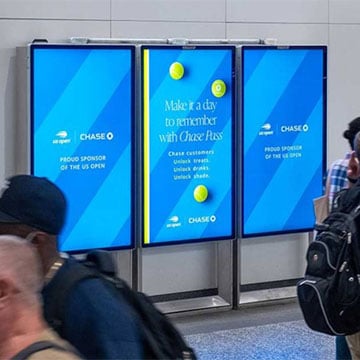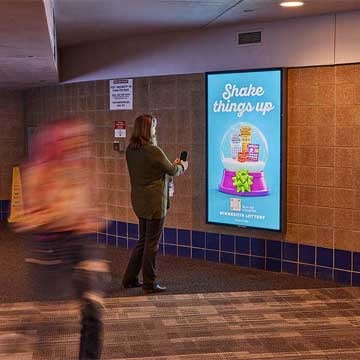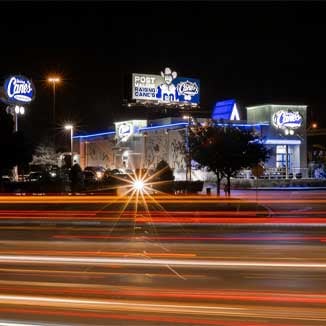
Contextual Relevance: The Non-Creepy Alternative to Third-Party Cookies
January 30, 2024
Thanks to third-party cookies, sometimes the Internet can feel like a surveillance state. And while as consumers we’re relieved to see the long-awaited Google Chrome cookie deprecation begin – for marketers, their sunset leaves a hole. So, what now? How do advertisers get in front of their audiences without following them around? How do brands make a genuine connection with customers without spying on them?
The friendly alternative to third-party cookies is contextual relevance. Simply put, it’s alignment between the content of the ad and the environment in which the ad is encountered – like a tropical vacation destination running ads in wintry cities reminding would-be travelers that they don’t have to be cold.

Contextually relevant ads acknowledge where people are, what they’re doing, and how they might feel in that moment. No matter the brand, no matter the category, contextual relevance sends a clear message to consumers: “This brand understands me.” Maybe that’s why 2 out of 3 consumers pay more attention to contextually relevant ads (SOURCE: DoubleVerify, 2022) and why it improved unaided recall by 4x and aided recall 2x (SOURCE: Integral Ad Science, 2022).
The impact of context is profound. It makes consumers 2.5x more likely to take action, 36% more likely to enjoy the ad, and 24% more likely to buy the product. Contextual ads are considered 60% more relevant and make 85% of consumers more receptive to future ads from the brand (SOURCE: Seedtag/Nielsen, 2022).
Numbers like that might have you wondering, “how do I do contextual relevance?”
The answer is out of home, which has one significant advantage over every other medium when it comes to contextual relevance: it’s that sometimes, just being in a certain place at a certain time tells us all we need to know.
For example, when the freeways leading away from Lincoln Financial Center are jammed late afternoon on a fall Sunday, chances are those roads are probably full of Eagles fans leaving the game. Does that mean you reskin your Philadelphia billboard creative in midnight green and silver, make a “Birds” pun in the copy, and call it a day.
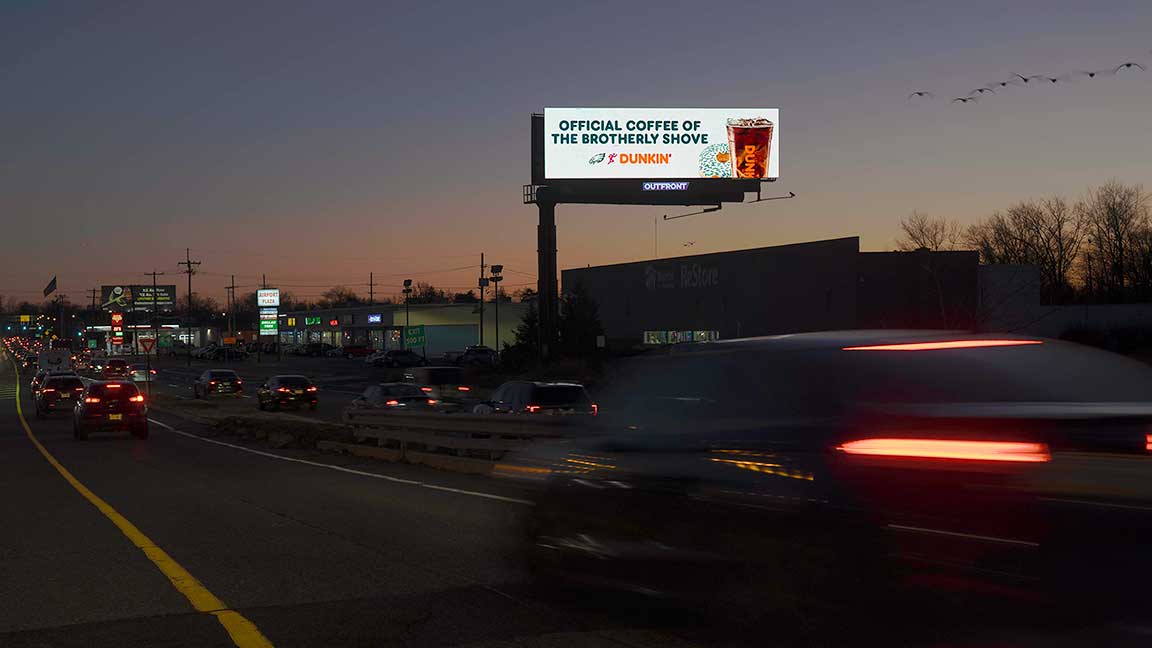
That’s one option – and for traditional static billboard media, it’s a good one! But digital out of home allows brands to take contextual relevance to the next level. With dynamic DOOH creative powered by our XPress advanced capability, advertisers can use real-time data to trigger different variants of the creative or even include that data in the creative itself! Popular triggers include weather, traffic, time of day, and even sports scores.
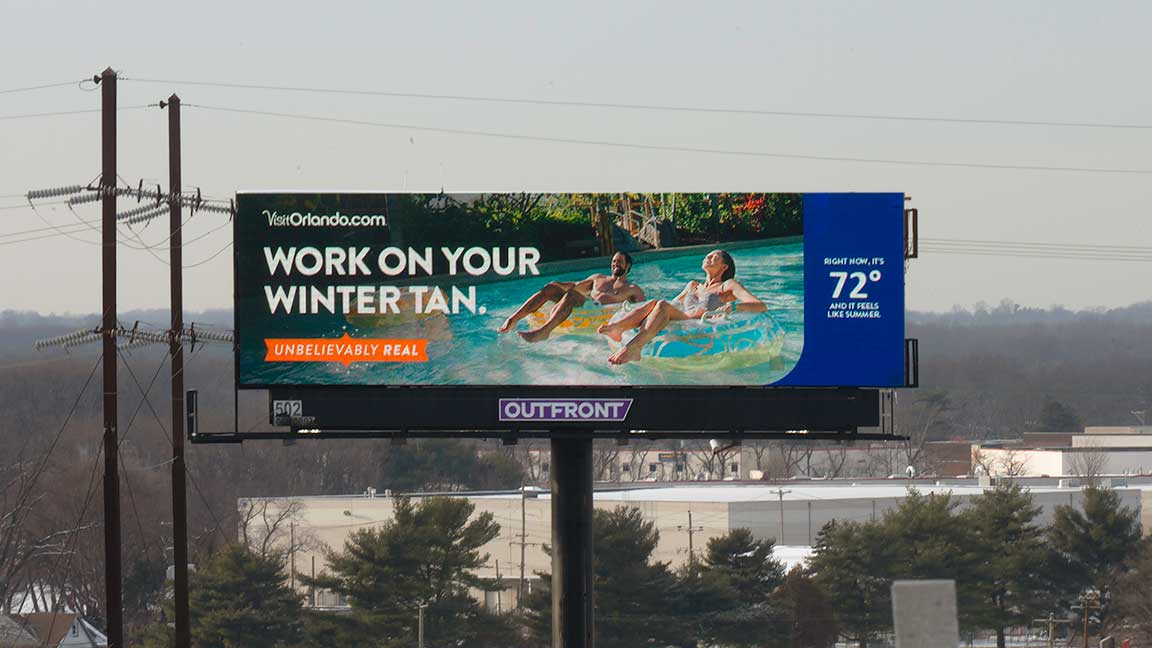
That means that when the Eagles win, fans on their way home might see a digital bulletin with a celebratory tone; when they lose the copy can commiserate. We even had one advertiser run special creative for 30 minutes every time they scored a touchdown!
When advertisers take this approach, it’s no longer just “this brand understands me” – it’s “this brand is by my side.”
Contextual relevance isn’t just for creating connection – it can drive conversion too. One common example of context directly influencing sales is directional creative that points people to the point of purchase, like a restaurant chain customizing each billboard with directions to its nearest location. Bet you didn’t realize that counted as contextual! (The context is, “You’re here and you’re hungry. We hope.”)
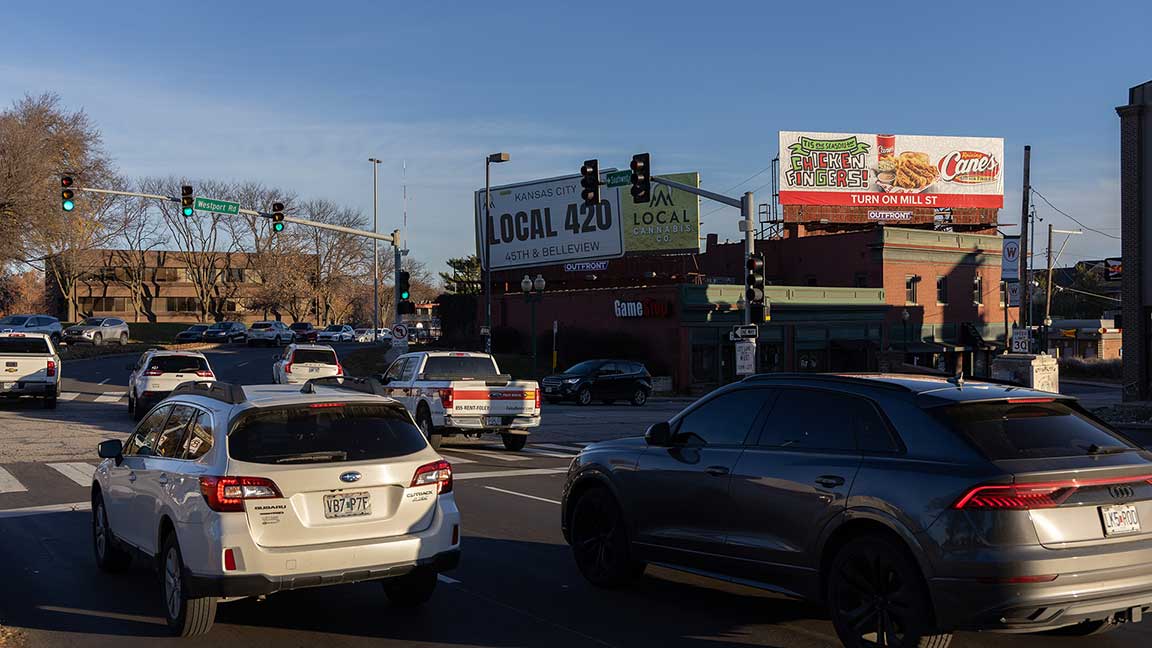
Are you ready to show your customers that you stand by their side? We’re here to help you put your brand in context. Connect with us today!
Author: Jay Fenster, Marketing Manager @ OUTFRONT
Links to third-party content are not endorsed by OUTFRONT Media.
